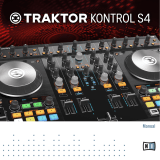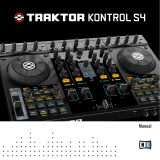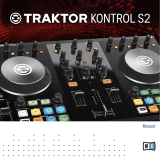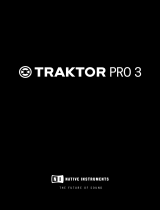
9/10 10/10
10 - USING THE AIR CONTROl
11 - CREATING A PlAYlIST
10.1 In the DJControl AIR+ control panel, make sure that the proximity sensor (air
control) is enabled.
A playlist is a set of tracks that you choose to group together – as part of a specic
genre (electro, rock...) or theme (favorites, party, birthday, 80s...).
10.2 Make sure that the Bank 1 button is on. Press and
hold button 1, 2, 3 or 4 and move your hand above
the proximity sensor at the same time to modulate the
amount of the eect applied.
11.2 Click the button to create a playlist.
Enter a name for the playlist, then click OK.
11.1 Highlight one of the tracks
that you want to add to the
playlist, using the Files / Folders
rotary browser knob:
The new playlist appears in the Playlists folder.
11.3 Return to the folder containing your
music, using these controls:
11.4 In DJUCED™ 40°, select one or more
tracks using your mouse.
By holding down the SHIFT key on your
computer's keyboard, you can select
several consecutive les.
Drag and drop the selected les into the
playlist you have created (here, “My Playlist”).
The button appears on the left.
9 -
WORKING WITH lOOPS
9.1 Looping in or out
Make sure that the Bank 2 button is on.
Then press button 1 to set the loop’s start point, and button 2 to set the loop’s end point.
Use the vertical lines in DJUCED™ 40° (1 line = 1 beat), as well as the music being played, to
help you determine the best place for the end of the loop.
9.2 Increasing or decreasing the length of the loop
Make sure that the Bank 2 button is on. Then press button 3 to divide the length of the
current loop in half, or button 4 to double the length of the loop.
Press the MAGIC button to instantly split the current loop into 4 parts, and
assign the parts of the loop to the 4 pads. If you press the MAGIC button without
having a current loop, nothing will happen and a message will be displayed at the
bottom of the DJUCED™ 40° window, instructing you to rst create a loop before
you can generate samples.
DJUCED™ 40° plays a part of the track as a loop.
÷
2 X2
UK
US













